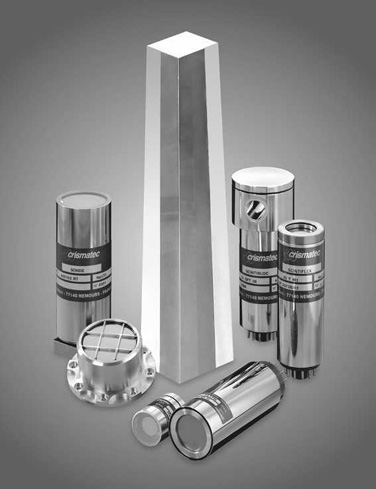|
POPOP
POPOP or 1,4-bis(5-phenyloxazol-2-yl) benzene is a scintillator. It is used as a wavelength shifter (also called a "secondary scintillator"), which means that it converts shorter wavelength light to longer wavelength light. Its output spectrum peaks at 410 nm, which is violet Violet may refer to: Common meanings * Violet (color), a spectral color with wavelengths shorter than blue * One of a list of plants known as violet, particularly: ** ''Viola'' (plant), a genus of flowering plants Places United States * Viol .... National Diagnostics, retrieved 24 Sept 2007 POPOP is used in both solid and liquid organic scintillators. References [...More Info...] [...Related Items...] OR: [Wikipedia] [Google] [Baidu] |
Scintillator
A scintillator is a material that exhibits scintillation, the property of luminescence, when excited by ionizing radiation. Luminescent materials, when struck by an incoming particle, absorb its energy and scintillate (i.e. re-emit the absorbed energy in the form of light). Sometimes, the excited state is metastable, so the relaxation back down from the excited state to lower states is delayed (necessitating anywhere from a few nanoseconds to hours depending on the material). The process then corresponds to one of two phenomena: delayed fluorescence or phosphorescence. The correspondence depends on the type of transition and hence the wavelength of the emitted optical photon. Principle of operation A scintillation detector or scintillation counter is obtained when a scintillator is coupled to an electronic light sensor such as a photomultiplier tube (PMT), photodiode, or silicon photomultiplier. PMTs absorb the light emitted by the scintillator and re-emit it in the form of ele ... [...More Info...] [...Related Items...] OR: [Wikipedia] [Google] [Baidu] |
Wavelength Shifter
A wavelength shifter is a photofluorescent material that absorbs higher frequency photons and emits lower frequency photons. The material absorbs one photon, and emits one or multiple lower-energy photons. The relaxation time of the excited molecule is usually in the order of nanoseconds. Applications Wavelength shifters are often used in particle physics to collect scintillation or Cherenkov light in particle detectors. Materials, such as acrylic slaps or optical fibers, are typically either doped with wavelength-shifting molecules or coated with wavelength-shifting paint. Wavelength-shifting technology is of particular interest for low-background supernova neutrino detectors such as IceCube, Super-Kamiokande or its successor Hyper-Kamiokande. Here, wavelength shifters offer two advantages: As these types of detectors are based on the emission of Cherenkov photons of superluminous secondary particles from the neutrino interaction, absorbing more photons in the UV range and shif ... [...More Info...] [...Related Items...] OR: [Wikipedia] [Google] [Baidu] |
Violet (color)
Violet is the color of light at the short wavelength end of the visible spectrum, between blue and invisible ultraviolet. It is one of the seven colors that Isaac Newton labeled when dividing the spectrum of visible light in 1672. Violet light has a wavelength between approximately 380 and 435 nanometers. The color's name is derived from the violet flower. In the RGB color model used in computer and television screens, violet is produced by mixing red and blue light, with more blue than red. In the RYB color model historically used by painters, violet is created with a combination of red and blue pigments and is located between blue and purple on the color wheel. In the CMYK color model used in printing, violet is created with a combination of magenta and cyan pigments, with more magenta than cyan. Violet is closely associated with purple. In optics, violet is a spectral color (referring to the color of different single wavelengths of light), whereas purple is the color of ... [...More Info...] [...Related Items...] OR: [Wikipedia] [Google] [Baidu] |
Phosphors And Scintillators
A phosphor is a substance that exhibits the phenomenon of luminescence; it emits light when exposed to some type of radiant energy. The term is used both for fluorescent or phosphorescent substances which glow on exposure to ultraviolet or visible light, and cathodoluminescent substances which glow when struck by an electron beam (cathode rays) in a cathode-ray tube. When a phosphor is exposed to radiation, the orbital electrons in its molecules are excited to a higher energy level; when they return to their former level they emit the energy as light of a certain color. Phosphors can be classified into two categories: fluorescent substances which emit the energy immediately and stop glowing when the exciting radiation is turned off, and phosphorescent substances which emit the energy after a delay, so they keep glowing after the radiation is turned off, decaying in brightness over a period of milliseconds to days. Fluorescent materials are used in applications in which the ... [...More Info...] [...Related Items...] OR: [Wikipedia] [Google] [Baidu] |


